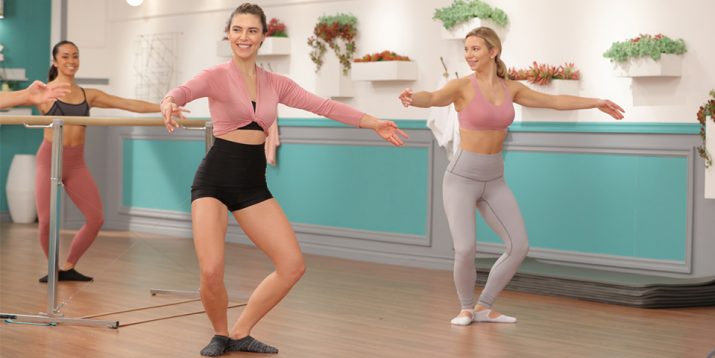How to Do a Plié With Xtend Barre Creator Andrea Rogers

A plié (pronounced plee-AY) is as simple as bending your knees — and yet, this foundational movement really isn’t that simple.
When translated from French, plié means “bend” or “bending.” It’s a staple movement in ballet and many barre workouts, like Xtend Barre.
In these workouts, you’ll need to know how to do a plié properly, as it’s a foundation for more advanced movements.
There are a few variations of plié, such as the demi or grande, and in Xtend Barre you’ll sometimes do a plié while lifting your heels off the ground in relevé.
The following tips can help you do all these variations correctly.
How to Do a Plié
Yes, we all know how to bend our knees. That’s not the tough part about this move.
The thing that’s the most important when you’re doing a plié is your alignment: Your feet, knees, hips, spine, shoulders, and head must all be placed in proper alignment to truly get all the benefits and strengthening a plié has to offer.
Here, we break down the basic steps to do a plié, and then we dive into some tips to help you improve your plié.
1. Find first position
First position is a standard foot placement in ballet. You can also do a plié from many foot positions, such as second, where your feet are separated.
- Stand tall with your feet together and your toes pointing forward.
- Rock back on your heels, and then turn your legs out from the hips so your toes point out to the sides.
- Don’t worry about how wide your turnout is — you don’t want to force it to a point that it’s uncomfortable.
2. Solidify your foundation
- Distribute your weight evenly between your right and left foot, the front and back of your foot, and the inside and outside of your foot.
3. Bend your knees
- To begin your plié, simply bend your knees.
- For a demi plié, your heels should remain firmly planted on the ground.
4. Maintain proper alignment
- Your knees should track over the middle of your foot, instead of caving in or bowing out.
- Keep a long spine to avoid hunching your back or sticking your tailbone out — you should be in neutral spine.
- Make sure your abs are engaged the whole time to help you maintain this position as you bend your knees to lower into the plié.
5. Rise back up
- To come back up from the bottom of the plié, simply straighten your legs and return to your original position.
- Engage your muscles (legs, glutes, core), and move slowly and with control: press through your heels to activate your hamstrings and glutes, and strengthen your inner thighs to keep your knees tracking over your toes.
